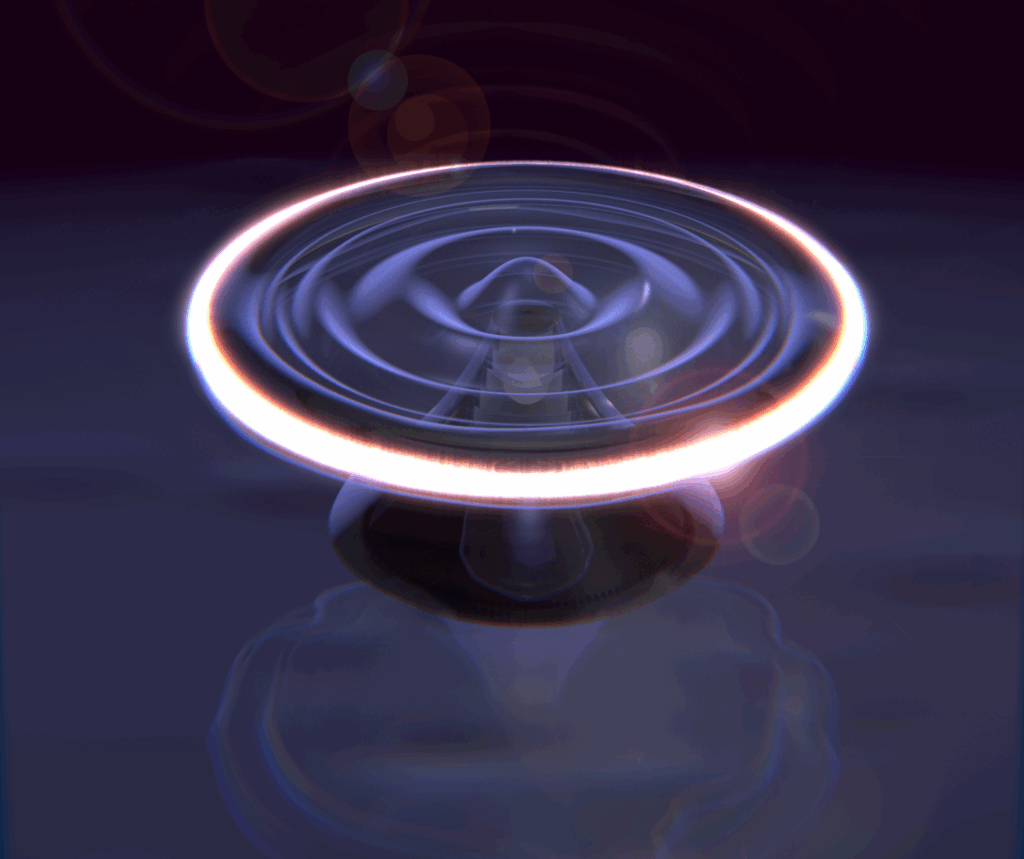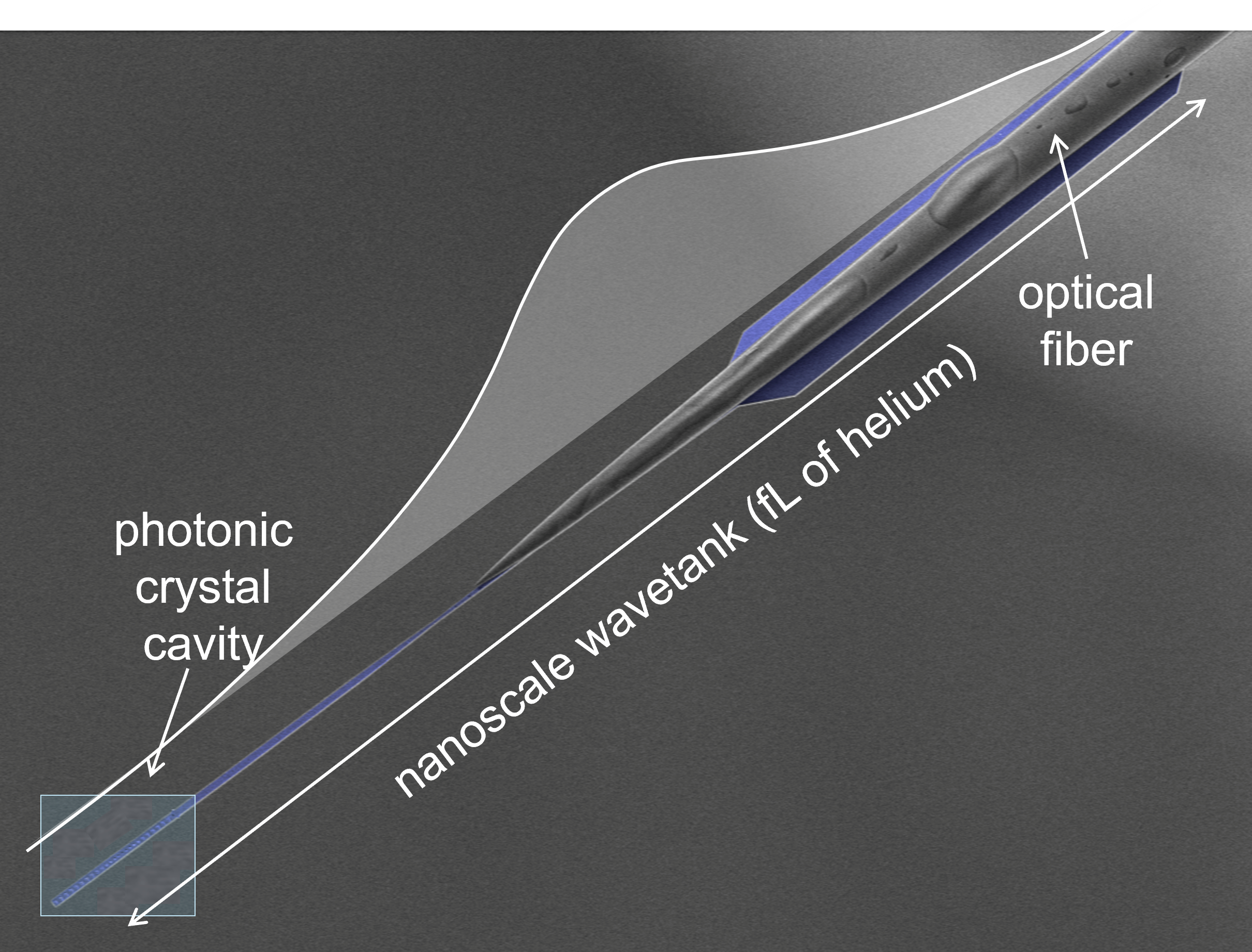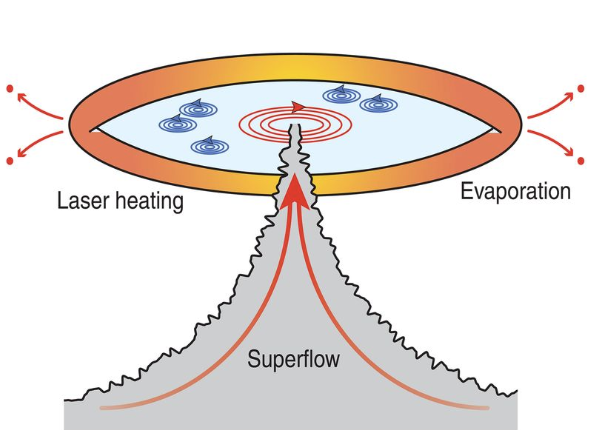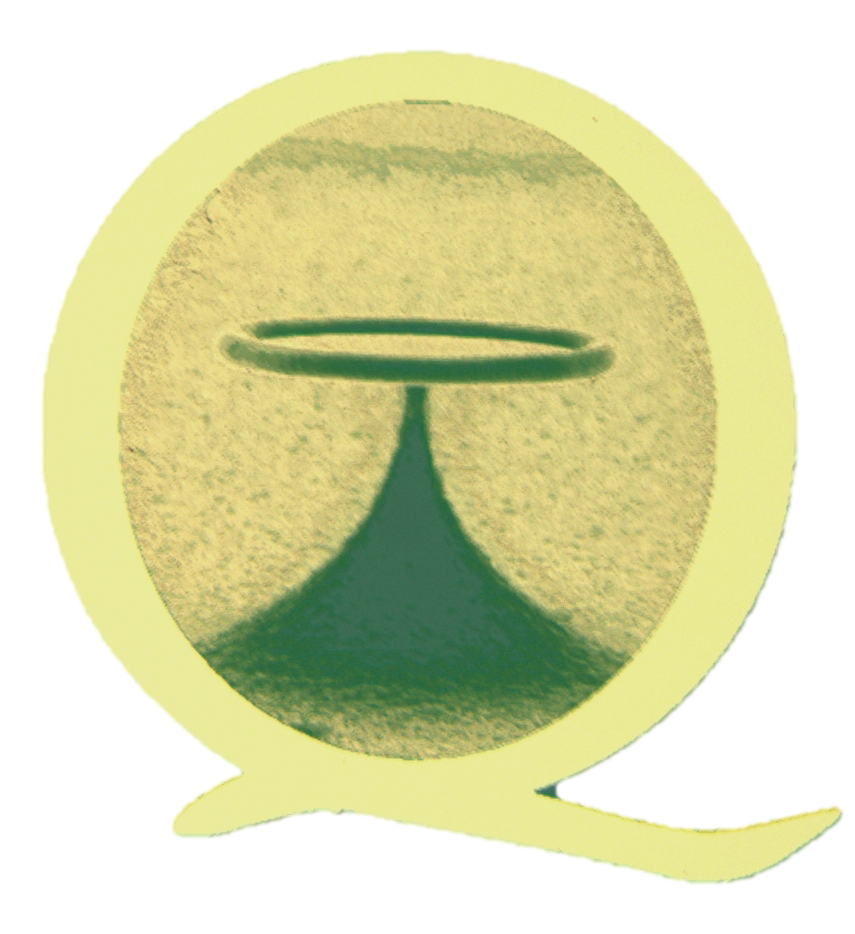Superfluidity is a quantum state of matter that exists macroscopically in helium at low temperatures. The elementary excitations in superfluid helium have been probed with great success using techniques such as neutron and light scattering. However, measurements of phonon excitations have so far been limited to average thermodynamic properties or the driven response far out of thermal equilibrium. Here, we use cavity optomechanics to probe excitations in superfluid helium, such as vortex dynamics and nonlinear hydrodynamics, in real time.

Recent Work
Nonlinear wave dynamics on a chip

There are striking similarities between shallow water waves and nonlinear wave dynamics in superfluid helium. Using a nanoscale wave flume coated in superfluid, we use the optomechanical interaction between light and superfluid helium films to observe extreme nonlinear hydrodynamics. This work paves the way for the exploration and discovery of nonlinear behaviours unattainable in classical wave flumes.
Read more:
M. Reeves, et al., Nonlinear wave dynamics on a chip, arXiv:2504.13001, (2025).
Engineered entropic forces allow ultrastrong dynamical backaction

By leveraging the optomechanical interaction between light and superfluid third sound on a silica microsphere, we demonstrate optomechanical phonon lasing with a threshold power of only a few picowatts. This platform allows us to engineer the dynamical backaction from entropic forces, which we have shown to exceed radiation pressure forces by eight orders of magnitude. These results pave the way for the study of nonlinear phenomena in fluids, which we explore in future work (see above).
Read more:
A. Sawadsky, et al., Engineered entropic forces allow ultrastrong dynamical backaction, Science Advances, 9, 21, (2023).
Coherent vortex dynamics in superfluid helium thin films

Quantized vortices are central to the behavior of two-dimensional superfluids, as recognized by the 2016 Nobel Prize in Physics. They had however not been directly observed in superfluid helium films, due to Angström-sized cores and low refractive indices, which prevent direct optical imaging. In this work, we generated and detected quantized vortices to observe their dynamics through an alternate mechanism through their interaction with sound waves confined on the surface of an optical microresonator.
Read more:
Y. Sachkou, et al., Coherent Vortex Dynamics in a Strongly-Interacting Superfluid on a Silicon Chip, Science, vol. 366, no. 6472, pp. 1480-1485, (2019).
See also: S. Forstner, et al., Modelling of vorticity, sound and their interaction in two-dimensional superfluids,
New Journal of Physics, vol. 21, p. 053029, (2019).

